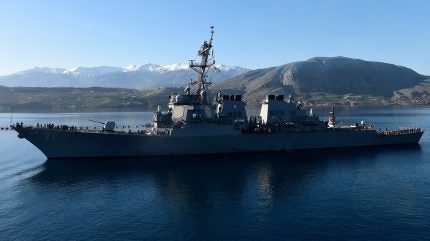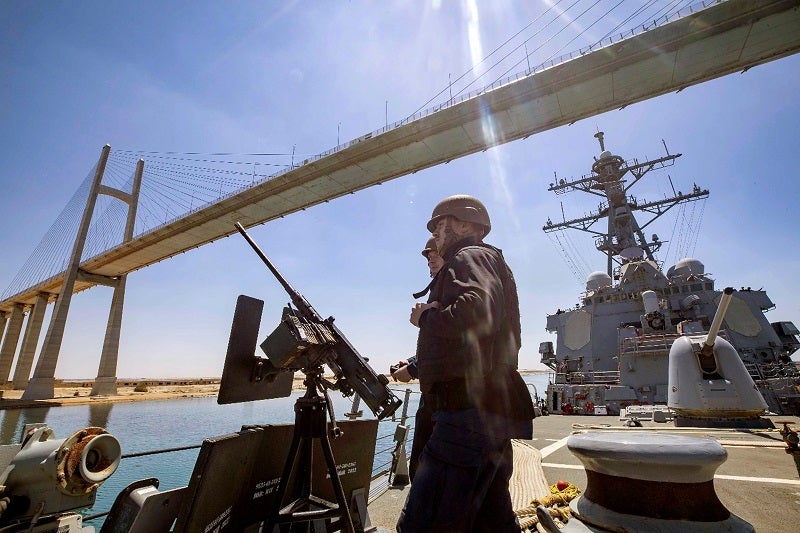
The US Navy will extend the life of 12 Arleigh Burke-class Flight I destroyers beyond their expected 35-year service life.
Navy Secretary, Carlos Del Toro, announced the decision in Washington on 31 October 2024. Accordingly, the service has proposed life extension funding in the Fiscal Year 2026 Budget request.
At the Secretary’s appeal, the Navy conducted a thorough evaluation of each DDG 51 Flight I ship (DDG 51-71) over the past ten months, and determined that 12 destroyers could, and should, remain operational beyond their expected service life.
The decision, based upon a hull-by-hull evaluation of ship material condition, combat capability, technical feasibility and lifecycle maintenance requirements, will result in an additional 48 years of cumulative ship service life in the 2028 to 2035 timeframe.
USS Arleigh Burke (DDG 51), the first warship in the class, was commissioned in 1991. Subsequently, the first 21 destroyers are categorised as Flight I vessels. The next seven destroyers are Flight II, followed by Flight III beginning with the USS Jack H Lucas (DDG 125).
Old destroyers in a new era
The latest Flight III ships include improvements including hangars for two SH-60B/F LAMPS helicopters, a new combat system software, an enlarged flight deck, the Evolved SeaSparrow missile, the Kingfisher mine detection sonar, the Kollmorgen optronic sight, and an upgraded Aegis radar system.
While lacking some of these improvements, the 12 ageing warships continue to pack a punch. Del Toro noted that they continue to project power globally, “most recently in the Red Sea.”
These vessels demonstrated their “ability to defend themselves as well as our allies, partners and friends from missile and drone attacks.”

Competing with China’s PLAN
However, the Navy is also under pressure to deliver a credible ship count as the US enters a strategic level competition with China whose People’s Liberation Army Navy (PLAN) has expanded considerably in recent years.
Meanwhile, the US Navy is said to be lagging behind, still unable to reach its 2018 force structure goal of 355 ships (of certain types). However, this target was lifted to 381 ships in a report to Congress last year.
The size of the Navy since 2003 has generally ranged between 270 and 300 battle force ships. As of 30 September 2024, the figure was 296.
According to the Center for Strategic and International Studies (CSIS), China now possesses the world’s largest maritime fighting force. The PLAN operate 234 warships.
China’s combatants encompass all of its known, active-duty crewed, missile- or torpedo-armed ships or submarines displacing more than 1,000 metric tonnes, including the 22 missile-armed corvettes recently transferred to China’s Coast Guard but not the approximately 80 missile-armed small patrol craft operated by the PLAN.
If China continues to expand its fleet at the current pace and the US does not revitalise its shipbuilding industry, China will grow increasingly likely to emerge victorious from interstate war, the CSIS explained, especially a prolonged great power war.
The service life extensions meet the intent of Chief of Naval Operations, Admiral Lisa Franchetti, and the NAVPLAN:
“Today’s budget constrained environment requires the Navy to make prioritised investments to keep more ready players on the field.
“The Navy is actively pulling the right levers to maintain and grow its Battle Force Inventory to support the US’ global interests in peace and to win decisively in conflict.”
Cultivating strategic relationships
At the strategic level, the Department of the Navy has already begun to implement certain measures to consolidate its force structure with allied services.
In September 2024, South Korea’s leading naval prime Hanwha Ocean successfully bid to maintain, repair and overhaul a US Navy auxiliary vessel for the first time. The deal was considered an “historic moment” for the company and for the defence cooperation between the two countries.
A few months prior to this contract award, in June, Del Toro also announced that the Navy’s Philly Shipyard, a US tanker and cargo construction company, had entered into an acquisition agreement with Hanwha Systems and Hanwha Ocean in a deal worth $100m.
At the time, the Navy Secretary claimed that the deal was a “game-changing milestone,” and a few months before commented that it “centered on attracting Korean investment in integrated commercial and naval shipbuilding facilities.”
The Navy are also eager to keep its platforms in shape. The US operates various naval aviation fighters and in a modernisation programme worth $10bn, the service will upgrade legacy F-16s with F-35As and F-15EXs.



